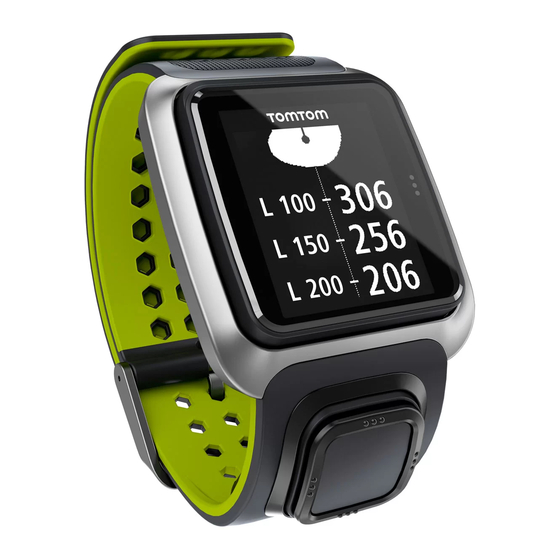TomTom Golfer Referenzhandbuch - Seite 20
Blättern Sie online oder laden Sie pdf Referenzhandbuch für Siehe TomTom Golfer herunter. TomTom Golfer 41 Seiten.
Auch für TomTom Golfer: Referenzhandbuch (41 seiten)

Approaching the green
About greens
A green, or putting green, is an area of closely trimmed grass surrounding the hole or pin. Holing
out or getting the ball into the hole with the minimum number of strokes possible is the main aim of
playing golf.
The green allows players to putt or make precision strokes using a putter. A putter has very low loft
or angle on the face of the club so that the ball rolls smoothly along the ground, and hopefully into
the hole.
Usually the green is flatter than other areas of the course, though gentle slopes and undulations can
be found on some courses. Sand or water hazards are often placed adjacent to the green, which
makes the approach to the pin more challenging and can require the golfer to
lay
up.
The location of the hole changes from day to day to promote even wear of the turf on the green.
The grass of the green is cut very short so that a ball can roll for a long distance. The green is
typically surrounded by slightly higher grass known as the fringe, and then by the fairway and/or
rough. The fringe slows the ball and stops it rolling along the green from an approach shot or putt,
preventing the ball from leaving the green.
Though it is possible to putt on the fringe, the longer grass interferes with the path of the ball.
Hence players often choose to use a lofted club such as an iron to make a chip shot, where the ball
carries in the air for a few yards and then rolls along the green like a normal putt.
See also:
Approaching the green using your watch
Approaching the green using your watch
As seen from the example below, the shape of the green on your watch mirrors the shape of the
actual green that you are approaching.
Any surrounding hazards are shown as patterns. Water is shown using a wave pattern and bunkers as
a dotted pattern. If a water and sand hazard are in the same area surrounding the green, water
takes priority and that pattern is shown over the sand pattern. For more information on hazards,
see
About
hazards.
20
